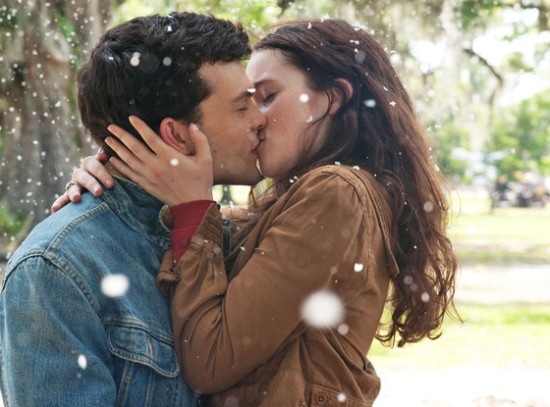 Ethan Wate is a teen in high school yearning to escape his small and radically conservative town. Every night, he dreams about a girl that he is convinced is his destiny. The girl reaches her hand out to him but he can neither get closer nor see her face. Meanwhile, there is a rumor that a student from out of town is transferring to his small country school. The new student is Lena Duchannes, a sharp-tongued but witty and beautiful girl. She catches Ethan’s attention in an instant—her aura is awfully familiar like the girl in his dreams. But can Ethan be sure that he is positively fated to be with Lena?
Ethan Wate is a teen in high school yearning to escape his small and radically conservative town. Every night, he dreams about a girl that he is convinced is his destiny. The girl reaches her hand out to him but he can neither get closer nor see her face. Meanwhile, there is a rumor that a student from out of town is transferring to his small country school. The new student is Lena Duchannes, a sharp-tongued but witty and beautiful girl. She catches Ethan’s attention in an instant—her aura is awfully familiar like the girl in his dreams. But can Ethan be sure that he is positively fated to be with Lena?
In the conservative town of Gatlin, South Carolina, where the villagers are still stuck in the prideful bubble of the pro-south mentality of the Civil War, the intensifying innocent love begins to unravel the belying dark fantasy. Ethan discovers that Lena and her family are magical creatures called “casters,” who have supernatural powers to control the body and mind of mortals as well as to change weather, create spells, and more. Lena anxiously awaits her sixteenth birthday, which will determine whether her true nature as a caster will be dark or light. She struggles to fight against the dark curse that overshadows her good nature.
A little like The Princess Bride because of its fated-to-love classic story, but more supernatural and nowhere near as good, Beautiful Creatures (2013), directed by Richard LaGravenese, is an adaptation of a book of the same title. Its music, makeup, and computer graphics are individually attractive and delightful, yet they altogether create a film too expressionistic that delivers overt and obvious statements about the story.
Makeup particularly disturbs the actors’ natural acting and eliminates its beauty of subtlety. For example, the makeup of Alice Englert, who plays Lena, gets visibly smokier eyes as she leans toward the “dark” side, even though it is most likely possible for the actress to express this emotion without the help of the makeup team. Thus, the film’s story is not natural and credible as its own world, and the audience remains distant and conscious that the film is simply a film.
The first half of the film boasts great cinematography, beginning with aesthetically pleasing scenes that sweetly portray young love. By the end of the film, however, the use of cinematography becomes vexing and comical. The ultimate fight between the dark and the light is illustrated with overwhelming contrast in music and lighting. The “dark” characters are literally surrounded by pitch darkness and supported by ominous music, which does not create subtle but rather clichéd and obvious difference in characters. The overly symbolic film became frivolous.
On the other hand, the acting of the two leads, Alden Ehrenreich and Alice Englert, is phenomenal. Right from the beginning of the film, the two actors spark a charming chemistry. If there is one thing that keeps the attention of the audience from straying away from the film, it is waiting to see the unequivocal, star-crossed love to finally come to realization. Their smiles are too adorable to ignore, and their lines are witty when they are not cliché.
One flaw about the actors, however, is that they, ages 23 and 19 respectively, look much too old for their supposed age, 15 or 16. Because age plays a big role in the movie, I could not help but repeatedly question the realism of the movie. Had LaGravenese casted a younger Ethan and Lena, however, I wonder if such sweet young romance could have possibly been created.
Although Beautiful Creatures is not a boring film to watch, it is also not one of the more intelligent films. Rated PG-13, the movie would have fared better had they eliminated the few violent and sexual scenes and downgraded to a PG film. The romance is sweet and the drama is cloyed, and I ponder if the film would have been better off directed to a younger audience.
